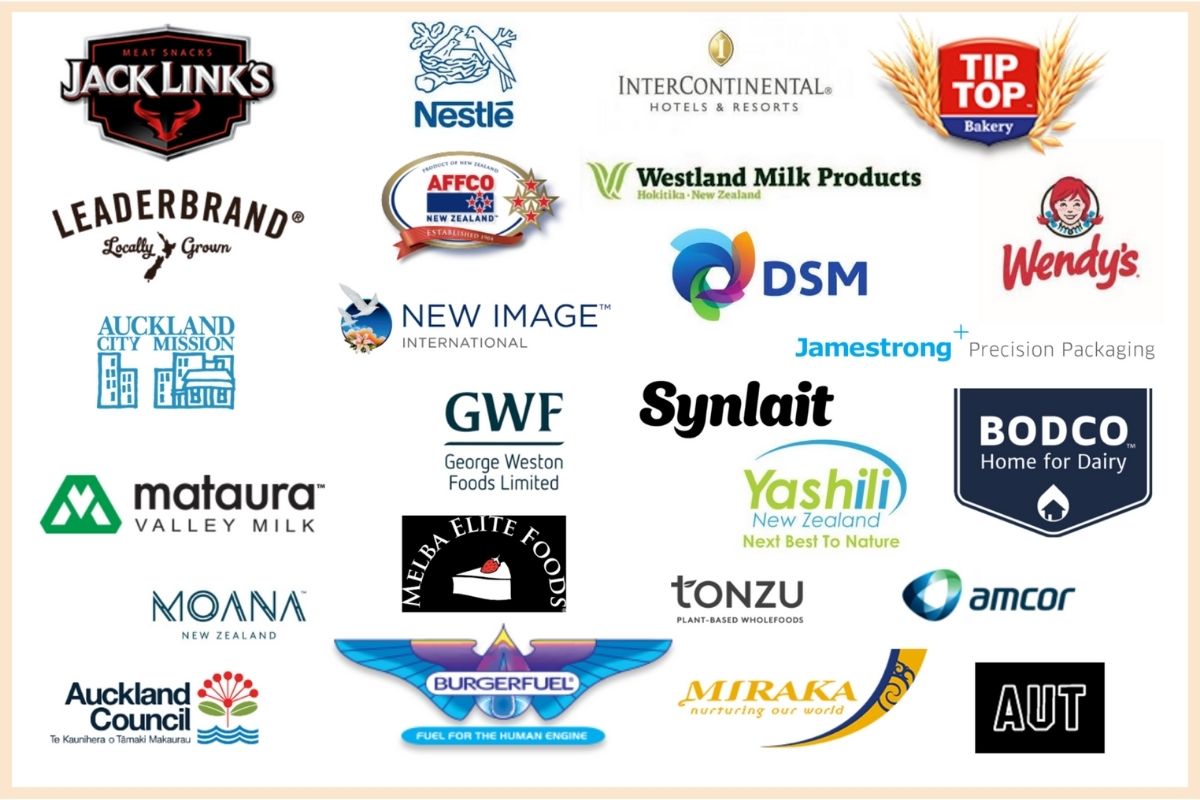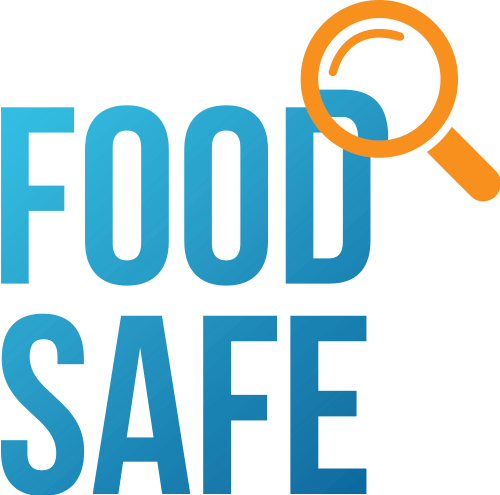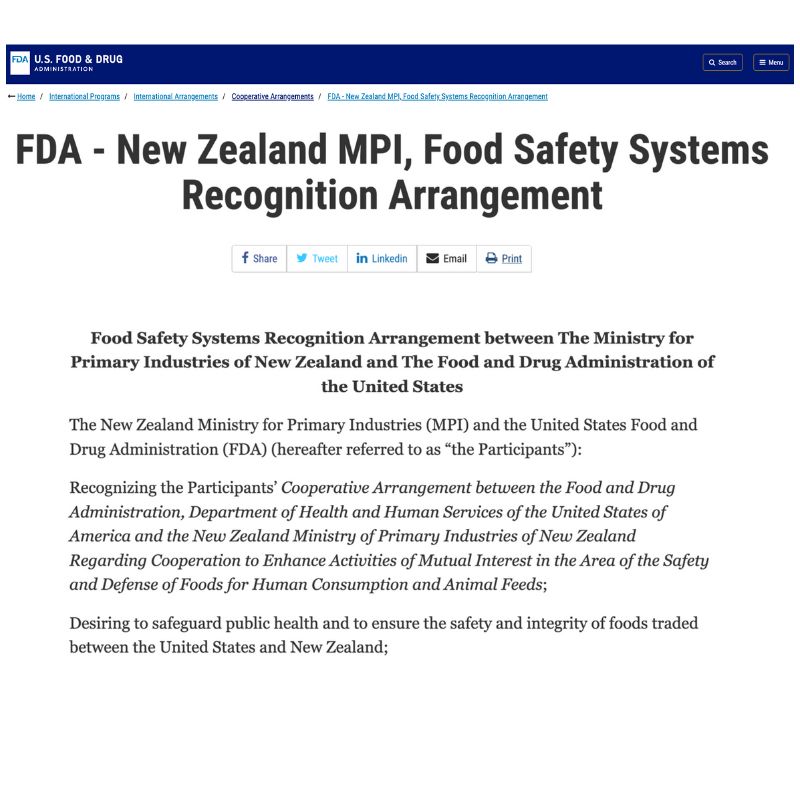Our training is designed for farm workers, fruit pickers, supervisors, as well as packhouses, orchards, and cold chain distributors.
Course Cost: POA
Horticulture Food Safety Training
Also referred to as Produce Safety Rules Training, our horticulture course programme is designed for orchard, farm and packhouse workers, RSE workers, temps, fruit pickers, supervisors, and staff working in the agriculture sector.
- Course duration: Basic (half-day) and Advanced (1 day)
- Delivery options:
- In person, at client site
- LIVE online via video conferencing
- Training by: Qualified ISO 22000 & 9001 Lead Food Safety Auditor
- Approach: Visualized, show-me-how videos and fun style of learning
Learners gain:
✅ Horticulture Training Certificate (Accepted by Verifiers, EHO, and Auditors including Global GAP)
Our training meets:
✅ Regulatory requirements such as Food Standards Australia New Zealand, Ministry for Primary Industries and US Food and Drug Administration FSMA Final Rule on Produce Safety, and
✅ Training standards for Global Gap, Global Food Safety Initiative (GFSI), BRCGS, SQF, WSE, and FSSC 22000.
Training Topics:
- Hygienic growing and harvesting practices.
- Management of employee health, illness, and hygiene practices.
- Sanitary design of facility and equipment.
- Cleaning and sanitizing practices – on the farm and in the packhouse.
- Washing and drying of produce (if applicable).
- Storage of produce.
Food Safe’s training includes:
- Types of food-borne illnesses and bacteria.
- Infectious diseases and illness management.
- Personal hygiene and its impact – Example: Spitting and how it can carry diseases like Hepatitis A.
- Importance of using designated toilets (keeping them clean) and how this impacts produce safety.
- Importance of frequent harvester and equipment cleaning.
- SOP details on ‘how to clean’ and knowledge about biofilm build-up.
- Show-me-how video about how quickly bacteria multiply in wet and damp environments and how minimizing risk at each step in the food handling chain is important.
- Correct handwashing techniques with a glitter bug cream and blue light experiment which will show how much this reduces risk.
- Allergen and contamination risks including show-me-how video on allergic reactions.
- Blood contamination from cuts and the importance of following corrective action procedures (Hepatitis B & Hepatitis C).
- Foreign matter contamination – what it is and how to minimize risk.
- Pest control – diseases/contamination carried from pests that can come into post-harvest/packhouse.
- Critical Hygiene Area (CHA) expectations: Importance of smoking in designated areas, not around produce.

Technical add-on options for farm workers, supervisors, team leaders and managers include:
- Boost Food Safety Culture – (BRCGS, GFSI, MPI, FSANZ, FDA)
- Vision and Mission
- People
- Consistency
- Adaptability
- Hazards and Risk Awareness
- Soil amendments – material added to soil to improve its physical properties
- The risk from animal intrusion including crop damage and fecal contamination
- Managing risks from adjacent land use (other properties around the farm)
- Sanitary design of facility and equipment
- Transportation of produce
Trusted by Horticulture brands, year-on-year
High-Performance Options to Improve Produce Safety, GAP and cGMP:
Food Safe offers a staged approach to GAP and cGMP training. This is available on demand for company groups of all sizes.
Stage 1:
- Spend time on shift observing GAP and cGMP focus areas
- Understand how elements of GAP and cGMP practically apply
- Analyze focus areas and close gaps in conjunction with technical, quality assurance team, and company management
- Train and educate operators onsite, supplemented with online visualized learning
Stage 2:
- Feedforward learning to the senior management team
Stage 3:
- Re-examine outcomes of actions, check for non-conformances related to Good Agriculture Practice, and act on competency gaps
HOW IT WORKS
FAQs
What are some Horticulture Food Safety definitions?
Agricultural inputs
Any incoming material (e.g. seeds, fertilizers, including compost, water, agricultural, chemicals, plant support) used for the primary production of fresh fruits and vegetables.
Agricultural worker
Any person who undertakes one or more of the following: cultivation, harvesting and packing of fresh fruits and vegetables.
Biocides
A chemical substance or micro-organism intended to destroy, deter, render harmless or exert a controlling effect on any harmful organism by chemical or biological means.
Biological control
The use of biological agents (e.g. insects, micro-organisms and/or microbial
metabolites) for the control of mites, pests, plant pathogens and spoilage organisms.
Biofilm
A microbial consortium adhering to a surface.
Biosolids
Nutrient-rich organic materials resulting from the treatment of sewage sludge (the name for the solid, semisolid or liquid residue generated during the treatment of domestic sewage in a treatment
facility).
Composting
A managed process in which organic materials are digested aerobically or anaerobically by microbial action.
Cull
The removal of any product or part of product that is of inadequate quality, including due to physical damage (such as broken skin or decay).
Cultivation
Any agricultural action or practice used by growers to allow and improve the growing conditions of fresh fruits or vegetables whether grown in an open field or in protected facilities (e.g. hydroponic systems, greenhouses/net houses).
Farm
Any premises or establishment in which fresh fruits and/or vegetables are grown and harvested.
Flooding
The flowing or overflowing of a field with water that is not under the control of the grower.
Pooled water (e.g. after rainfall) that is not reasonably likely to cause contamination of the edible portions of fresh produce is not considered flooding.
Grower
A person responsible for the management of the primary production of fresh fruits and vegetables.
Greenhouse
An indoor site, generally enclosed by glass or plastic, in which plants are grown.
Harvester
A person responsible for the management of the harvesting of fresh fruits and vegetables.
Hydroponics
A general term for the production of plants without soil in an aqueous nutrient medium.
Manure
Animal excrement, which may be mixed with litter or other material, and may be fermented or otherwise treated.
Micro-organisms
These include yeasts, moulds, bacteria, viruses and parasites; the corresponding
adjective is “microbial”.
Packer
A person responsible for the management of post-harvest activities and packing of fresh fruits and vegetables.
Packing or Packaging
The action of putting fresh fruits and vegetables in a container (e.g. box, crate or
basket) or package. This may take place in a field or within an establishment.
Packing establishment/Packaging establishment or Packhouse/Packing house
Any premises on which fresh fruits and vegetables are packed/packaged.
Post-harvest activities
Activities performed incidental to packing involving minimal transformation of
fresh fruits and vegetables, such as washing, sorting, culling, grading, cutting and trimming.
Primary production of fruits and vegetables
The steps involved in the growing and harvesting of fresh fruits and vegetables, including soil preparation, planting, irrigation, the application of fertilizers and
agricultural chemicals, field-packing and transport to a packing establishment.
Ready-to-eat fresh fruits and vegetables–Any fruit or vegetable that is normally eaten in its raw state, intended for direct human consumption without any further microbiocidal steps. This may include any fruit or vegetable that has been washed, peeled, cut or otherwise physically altered from its original form but remains in the fresh state.
Standard Operating Procedure (SOP
A set of detailed instructions describing how to carry out a routine activity.
Types of water:
Clean water
Water that does not compromise food safety in the circumstances of its use.
Potable water
Water which meets the quality standards of drinking water such as described in the World Health Organization (WHO) Guidelines for Drinking-water Quality.
What are the key focus areas of Horticulture Food Safety?
1. Primary Production
- Environmental hygiene
- Control and identification of potential sources of environmental contamination
- Location of the production site
- Assessing production site locations for environmental hazards
- Animals and human activity
- Managing risks from animals and human activities to prevent contamination
2. Establishment: Design and Facilities
- Location
- Location considerations for facility setup
- Premises and rooms
- Designing and organizing spaces to prevent cross-contamination
- Equipment
- Ensuring equipment is safe, clean, and prevents product damage
- Facilities
- Requirements for water supply, drainage, and waste disposal
3. Control of Operation
- Control of food hazards
- Managing biological, chemical, and physical hazards in food
- Key aspects of hygiene-control systems
- Implementing control measures for time, temperature, and specific processing steps
- Incoming material requirements
- Handling and inspection protocols for incoming materials
- Packing
- Practices to maintain the integrity and safety of packed goods
- Water
- Water management in production and processing activities
- Management and supervision
- Oversight responsibilities to ensure food safety standards are met
- Documentation and records
- Record-keeping for traceability and verification of food safety measures
- Recall procedures
- Establishing a system for product recalls in the event of contamination
4. Establishment: Maintenance and Sanitation
- Maintenance and cleaning
- Regular maintenance and sanitation protocols for facilities and equipment
- Cleaning programmes
- Detailed cleaning and sanitation schedules and procedures
- Pest-control systems
- Strategies for pest management to prevent food contamination
- Waste management
- Effective waste disposal practices to minimize risk of contamination
- Monitoring effectiveness
- Verifying the effectiveness of cleaning, maintenance, and sanitation efforts
5. Establishment: Personal Hygiene
- Principles for maintaining personal hygiene among food handlers to prevent food contamination
6. Transportation
- Guidelines for ensuring hygienic transportation of food products to prevent contamination during transit.
7. Product Information and Consumer Awareness
- Lot identification
- The role of lot identification in product traceability
- Product information
- Providing essential product information to consumers for safe consumption
- Labelling
- Requirements for clear and informative labeling on food products
- Consumer education
- Educating consumers on proper food handling and preparation techniques for safety
8. Training
- Awareness and responsibilities
- Emphasizing the importance of training in maintaining food safety
- Training programmes
- Developing and implementing effective training programs for all personnel involved in food handling
- Instruction and supervision
- Ensuring competent instruction and supervision of food handlers
- Refresher training
- Conducting ongoing and refresher training to uphold food safety standards
What are the main GFSI benchmarks in Horticulture?
A set of guidelines called the Global Food Safety Initiative (GFSI) benchmarks is intended to guarantee food safety and quality across the supply chain. Aiming to improve food safety worldwide, the GFSI 2020 Benchmarking Requirements, also known as Version 2020, brought in a number of significant modifications and themes. These benchmarks address several facets of food safety management systems, including but not limited to: They are essential for certification programs aiming for GFSI registration.
Food Safety Culture: A focus on creating and preserving an organization’s food safety culture, acknowledging its vital role in obtaining long-term food safety performance.
Mitigation of Food Fraud: Needs for Vulnerability Assessment and Plans to Guard Against Fraudulent Activities Across the Supply Chain.
Food Defense: Make sure that facilities have procedures in place to avoid, prepare for, respond to, and recover from actions that may jeopardize food safety. Also, concentrate on preventing intentional adulteration of food items.
Environmental Monitoring: Stricter guidelines for environmental monitoring initiatives are needed to stop and manage microbial contamination in manufacturing settings, particularly in locations where high-risk goods are produced.
Strengthening the processes for traceability and recall will make it possible to track food goods all the way through the supply chain and, in the event that a recall is required, to do so efficiently.
Guidelines for managing suppliers and maintaining control over raw materials, including risk analysis and activities for verification to guarantee input quality and safety.
Allergen Management: Strict guidelines for handling allergens in order to shield customers with food allergies from cross-contamination and to guarantee correct labeling.
Information Technology (IT) Systems for Food Safety Management: This refers to the understanding of how IT systems, such as data management, traceability, and process control, support food safety management systems.
These benchmarks, which cover a wide range of food safety topics from production and processing to packaging and distribution, are intended to be globally relevant. They form the basis for certification programs that are recognized by the GFSI, including FSSC 22000, IFS, BRCGS, SQF, and others.
The GFSI 2020 benchmarks, which incorporate the most recent best practices and address new problems in food safety, signal a major advancement in the global drive to improve food safety. Companies who want to be certified by GFSI or keep their certification must upgrade their food safety management systems to meet these new standards.
What is Agricultural Water Quality?
Criteria for Agricultural Water Quality Based on Generic E. coli Presence.
No Detectable Generic E. coli:
- Applicability: This strict standard applies to agricultural water uses where there is a reasonable likelihood that any present microbes could be transferred to produce, either directly or indirectly.
- Examples of use: Includes water for handwashing during and after harvest, on food-contact surfaces, for direct produce contact (including ice making) during or after harvest, and for sprouting irrigation.
- Action upon detection: If generic E. coli is detected, use of the water for these purposes must cease immediately. Corrective actions must be undertaken before the water can be reused. Untreated surface water is explicitly prohibited for these uses.
Geometric Mean (GM) and Statistical Threshold Value (STV):
- Applicability: These criteria apply to water directly applied to growing produce (excluding sprouts), accounting for natural variability in water quality and allowing for occasional high levels of E. coli.
- Criteria values: The GM value is set at 126 or fewer CFU of generic E. coli per 100 mL of water, and the STV value is set at 410 CFU or fewer per 100 mL.
- GM explained: Represents the central tendency, or average level, of E. coli in water, indicating overall water quality.
- STV explained: Reflects water quality variability, marking the level below which 90% of the samples fall, especially under adverse conditions.
- FDA online tool: An online tool is being developed to help farms input water sample data and calculate GM and STV values, facilitating compliance.
- Use of criteria: Serves as a management tool for assessing and strategizing on the microbial quality of agricultural water over time.
Corrective Actions and Flexibility
- Immediate actions: If water fails to meet the criteria, corrective measures must be taken as soon as practicable, but no later than the following year.
- Flexibility for compliance: Farms with water not initially meeting the criteria have several options to comply, including allowing a specific time interval between the last irrigation and harvest to permit the natural die-off of microbes, with a maximum of four days.
These rules and criteria are designed to enhance the safety of produce by ensuring that the agricultural water used does not contribute to contamination, providing a structured approach to water quality management in farming practices.
What are the key requirements for BRCGS in Horticulture?
In order to ensure the standard’s global applicability, improve food safety, and comply with the most recent industry trends and legal requirements, the BRCGS (Brand Reputation through Compliance Global Standards) Issue 9 for Food Safety incorporates a number of major revisions and requirements. Some of the main modifications and specifications mentioned in Issue 9 are summarized as follows:
Integration with GFSI 2020 Benchmarks: To ensure compliance with international standards, the new issue integrates the Global Food Safety Initiative’s (GFSI 2020) benchmark criteria.
Legislation Compliance: Strict guidelines have been set up to guarantee adherence to pertinent laws, highlighting the necessity for food enterprises to follow the law.
Food Safety Culture: To foster a culture of food safety within the company, specific guidelines are presented. This covers actions used to bring about a good culture shift, such as transparent communication, instruction, staff input, and actions necessary to uphold and enhance product safety procedures.
Revisions to the Food Safety Plan: The section on food safety has been updated to conform to the Codex Alimentarius validation requirement, guaranteeing a stronger method for hazard analysis and critical control points (HACCP).
Outsourced Processing: With explicit agreements and documented specifications, new guidelines for outsourced processing guarantee the preservation of food safety throughout the outsourced production process.
Food Defense and Fraud: The problem improves safeguards against adulteration and intentional contamination by expanding the parameters for food defense and fraud.
Unannounced Audits: The goal of requiring unannounced audits every three years is to improve the certification process’s dependability and rigor.
Blended Audits: The option to recertify through a blended audit, which mixes on-site and remote audits, has been reinstated. This option allows for flexibility in the audit process without sacrificing thoroughness.
These modifications show a thorough approach to food safety that places a strong emphasis on compliance, culture, and ongoing development. Their purpose is to guarantee that approved locations adhere to the strictest guidelines for food safety and quality control.
FDA FSMA Produce Safety Rule & Global GAP Requirements Explained
About Food Safe
Food Safe Ltd is a Category 1 NZQA-Registered PTE. Training complies with the Food Safety Bylaws and Verifier Audits right across New Zealand.
Our training is trusted by both well-known New Zealand and Global food companies and heaps of small teams too! Our training is science-based on New Zealand regulatory and globally recognised best practice – MPI, FAO, FDA, EU
Food Safe’s advisory committee includes leading experts, quality and compliance managers, and governance experts. For even more information about Food Safe and the companies we work with, click here.
Why Choose us for your Training?
- Complements compliance requirements
- Is simplified and visual, and supportive of implementing learning back on-job
- Is delivered by a trained ISO 9001 & 22000 lead auditor
- Is delivered by a trainer with first-hand knowledge and experience in high compliance operations where Food Safe also operates. This allows us to transfer best practices.

120
1000
100
How we work with companies
Companies we work with





























More Information
Comparison of Sanitising Methods used on Farm and Pack-houses – Source: FSANZ
| Sanitising method | Advantages | Disadvantages | Monitoring | Suitable uses |
|---|---|---|---|---|
| Calcium hypochlorite | Relatively inexpensive and easy to use. Effective against most microbes. Provides residual control. | De-activated by organic matter. Requires pH control (6.0-7.5). Corrosive to metal. | Test strips or meters to measure pH and chlorine. | All water used during harvesting and packing. |
| Sodium hypochlorite | Less affected by organic matter and pH than calcium/sodium hypochlorite. Provides residual control. Low corrosion. | Must be generated on site. | Automated analyser. | All water used in a packing facility. |
| Bromo-chloro compounds | Effective at low concentrations. Not affected by organic matter in water. Less affected by pH than calcium/sodium hypochlorite. Provides residual control. | Must be generated on site. Explosive at high concentrations. Relatively expensive. Requires good ventilation to avoid irritation to workers. | Redox probe. Method recommended by the manufacturer. | All water used in a packing facility. |
| Peroxyacetic acid (PAA) | Stable in high organic loads. Produces biodegradable by-products. | Hazardous at high concentrations. De-activated at high temperature and high pH. | PAA test strips. Automated analyser. | All water used in a packing facility. |
| Iodine | Stable in high organic loads. Effective at broad pH range. Some fungicidal activity. | Corrosive to metal. | Automated analyser. | All water used in a packing facility. |
| Ozone | Highly effective in killing microbes. | De-activated by organic matter. No residual control. Concentrations may be variable and cannot be easily monitored. Corrosive to metal. | Non-recirculated water used in a packing facility. Not suitable for dirty water or water in dump tanks and flumes. | All water used in a packing facility except for applications not suitable as mentioned. |
| Electrolysed water | No chemical inputs required. Low electricity usage. Multiple antimicrobial oxidants produced. Solution is stable and can be stored. No worker safety issues. | High capital cost. | Automated analyser. | All water used in a packing facility. Research underway on pre-harvest applications. |
Global Quality: New Zealand’s Food Safety Systems Recognition

New Zealand Comparability Determination by FDA
Report on the Comparability Determination of the Food Safety Component of the New Zealand’s Ministry for Primary Industries.
Source: FDA

New Zealand’s Global Role with Codex Alimentarius
New Zealand is a founding member of Codex and chairs two important Codex committees on Milk Products (CCMMP) and Meat Hygiene (CCMH).
Source: FAO
Hygienic practice for fresh fruits & vegetables
Source: Codex Alimentarius
The codes below explain the correct food safety procedures for vegetables.
Farm Food Safety Plan Template – Produce Safety FDA FSMA Final Rule
Food Safety Plan
Farm Food Safety Plan Template – United States Department of Agriculture
Source: FDA
Food Safety Plan
Farm Food Safety Plan Template – Learners can make their own plan – Editable Word Document
MPI New Zealand Requirements – FDA FSMA Final Rule
Horticulture Overview: Australia & New Zealand
New Zealand: Horticulture Packhouse Operations – MPI
New Zealand: Horticulture Snapshots
Horticulture Statistics and Data
| Information on dimension Area / Year | 1994 | 2002 | 2003 | 2005 | 2007 | 2009 | 2011 | 2012 | 2014 | 2017 | 2019 | 2020 | 2022 |
|---|---|---|---|---|---|---|---|---|---|---|---|---|---|
| Total apples (hectares) | 15,257 | 11,717 | 12,150 | 10,982 | 9,247 | 9,284 | 8,995 | 8,845 | 8,417 | 8,615 | 9,761 | 9,789 | 9,811 |
| Total kiwifruit (hectares) | 12,174 | 11,841 | 12,271 | 12,071 | 13,080 | 13,287 | 13,066 | 12,757 | 10,979 | 11,705 | 14,922 | 15,523 | 14,686 |
| Total avocados (hectares) | 1,375 | 3,106 | 3,235 | 3,400 | 4,004 | 4,117 | 3,976 | 4,149 | 3,893 | 3,979 | 4,520 | 4,869 | 5,283 |
| Total wine grapes (hectares) | 7,160 | 17,300 | 19,646 | 24,793 | 29,616 | 33,422 | 34,060 | 34,562 | 33,761 | 33,981 | 35,970 | 35,576 | 34,604 |
| Total olives (hectares) | .. | 2,612 | 2,732 | 2,433 | 2,173 | 2,016 | 1,792 | 1,657 | 1,325 |




